Related Research Articles
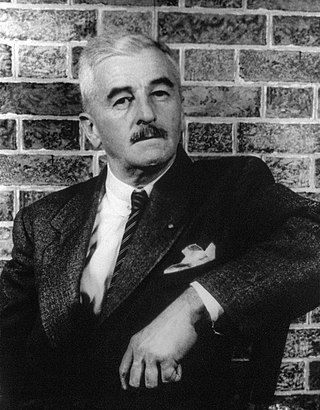
William Cuthbert Faulkner was an American writer. He is best known for his novels and short stories set in the fictional Yoknapatawpha County, Mississippi, a stand-in for Lafayette County where he spent most of his life. A Nobel laureate, Faulkner is one of the most celebrated writers of American literature and often is considered the greatest writer of Southern literature.

The Royal Flying Corps (RFC) was the air arm of the British Army before and during the First World War until it merged with the Royal Naval Air Service on 1 April 1918 to form the Royal Air Force. During the early part of the war, the RFC supported the British Army by artillery co-operation and photographic reconnaissance. This work gradually led RFC pilots into aerial battles with German pilots and later in the war included the strafing of enemy infantry and emplacements, the bombing of German military airfields and later the strategic bombing of German industrial and transport facilities.

William George Barker, was a Canadian First World War fighter ace and Victoria Cross recipient. He is the most decorated serviceman in the history of Canada.

Leaside Aerodrome was an airport in the Town of Leaside, Ontario. It opened in 1917 as a Royal Flying Corps airfield during the First World War.

Air Vice-Marshal William Vernon Crawford-Compton, was a New Zealand flying ace of the Royal Air Force (RAF) during the Second World War. He was officially credited with destroying at least 20 German aircraft.

Edgar James Kain, DFC was a New Zealand fighter pilot and flying ace who flew in the Royal Air Force (RAF) during the Second World War.
Lieutenant Gerald Alfred Birks was a Canadian First World War fighter ace credited with twelve aerial victories while serving in the British Royal Flying Corps and Royal Air Force.

Air Commodore Alan Christopher Deere, was a New Zealand fighter ace with the Royal Air Force (RAF) during the Second World War. He was also known for several near-death experiences over the course of the war. This led to his published autobiography being titled Nine Lives.

The Battle of Barking Creek was a friendly fire incident over the East Coast of England in the earliest days of the Second World War. On 6 September 1939, aircraft from several 11 Group, RAF Fighter Command squadrons, were scrambled to intercept German aircraft detected by radar (RDF) flying towards the English coast. The radar plots were reflections of British aircraft flying inland and Spitfire fighters sent to intercept shot down two Hurricanes in error, killing one of the pilots, the first death of a British fighter pilot in the war.

The Royal Air Force College (RAFC) is the Royal Air Force academy which provides initial training to all RAF personnel who are preparing to become commissioned officers. The College also provides initial training to aircrew cadets and is responsible for all RAF recruiting along with officer and aircrew selection. Originally established as a naval aviation training centre during World War I, the College was established as the world's first air academy in 1919. During World War II, the College was closed and its facilities were used as a flying training school. Reopening after the War, the College absorbed the Royal Air Force Technical College in 1966.
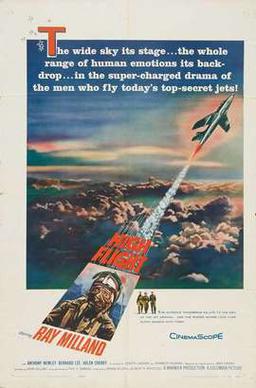
High Flight is a 1957 CinemaScope British Cold War film, directed by John Gilling and starring Ray Milland, Bernard Lee and Leslie Phillips.

The Royal Flying Corps Canada was a training organization of the British Royal Flying Corps located in Canada during the First World War. It began operating in 1917.
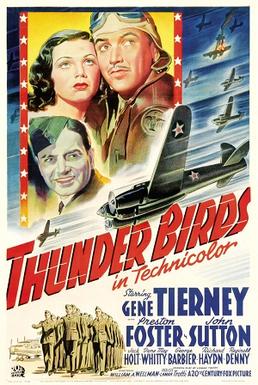
Thunder Birds is a 1942 Technicolor film directed by William A. Wellman and starring Gene Tierney, Preston Foster, and John Sutton. It features aerial photography and location filming at an actual Arizona training base of the United States Army Air Forces named Thunderbird Field No. 1 during World War II.

Flight Lieutenant Charles William Anderson Scott, AFC was an English aviator. He won the MacRobertson Air Race, a race from London to Melbourne, in 1934, in a time of 71 hours.

During World War II civilian flying schools, under government contract, provided a considerable part of the flying training effort undertaken by the United States Army Air Forces.

Alfred Burke Thompson (1915–1985), was an officer in the Royal Air Force and then the Royal Canadian Air Force, was the first Canadian taken prisoner in World War II, was a participant in the 'Great Escape', and was the Canadian who was the longest ever held as a prisoner of war.

No. 485 (NZ) Squadron was a fighter squadron established for service during the Second World War. It was the first New Zealand squadron formed under Article XV of the Empire Air Training Plan. Although many of its flying personnel were largely drawn from the Royal New Zealand Air Force, the squadron served in Europe under the operational and administrative command of the Royal Air Force.

Wing Commander Ian Richard Gleed, nicknamed "Widge," was a Royal Air Force (RAF) pilot and flying ace credited with the destruction of 13 enemy aircraft during the Second World War. He served in the Battle of France and Battle of Britain before being shot down and killed over Tunisia. Gleed published a fictionalized memoir, Arise to Conquer, in 1942.
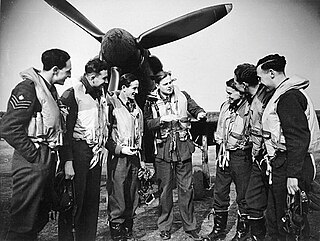
Group Captain Russell Faulkner Aitken was a New Zealand-born officer who served in the Royal Air Force (RAF) during the Second World War. He pioneered the use of amphibious aircraft for rescuing RAF pilots who had been shot down over the English Channel and the North Sea.
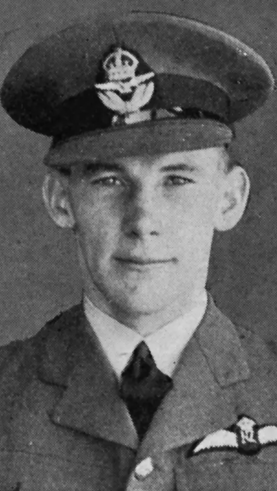
William Henry Hodgson was a New Zealand fighter pilot and flying ace who flew in the Royal Air Force (RAF) during the Second World War. He was officially credited with the destruction of five enemy aircraft.
References
- ↑ Parini 2004, p. 51.
- ↑ Harrison, Robert (1985). Aviation Lore in Faulkner. John Benjamins Publishing. p. 47. ISBN 9027220247.
- ↑ Scrivener, Leslie (June 9, 2013). "U of T Back Campus Debate Invokes William Faulkner, Morley Callaghan". Toronto Star.
- ↑ Oates 1987, p.28.
- ↑ Parini 2004, p.51.
- ↑ Parini 2004, p. 51.
- ↑ Karl 1989, p. 138.
- ↑ Karl 1989, p. 139.
- ↑ Dawson, David (2019-07-15). "The Flying Omlies". Memphis magazine. Retrieved 2022-05-26.
- ↑ "WILLIAM FAULKNER AND AVIATION: THE MAN AND THE MYTH | fau.digital.flvc.org". fau.digital.flvc.org. Retrieved 2022-05-26.